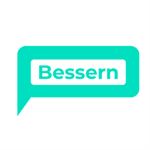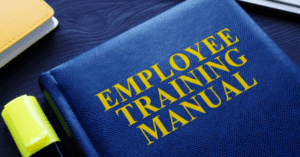How can team building boost collaboration and communication among you team? Team building enhances trust, breaks barriers, fosters empathy, and improves problem-solving, boosting workplace communication and collaboration.
Ice breaker team building is a popular strategy used by organizations to foster better communication, collaboration, and teamwork among employees. These activities are designed to help individuals break down barriers, build trust, and get to know each other on a more personal level.
By creating a more positive and supportive work environment, ice breaker team building can help improve employee morale, reduce turnover, and increase productivity.

Understanding Ice Breakers
Ice breakers are activities or games that are designed to help people get to know each other, break down barriers, and create a more positive and supportive work environment. They can be used in a variety of settings, including team meetings, training sessions, and social events. Ice breakers can take many different forms, including games, exercises, and questions and dialogue prompts.
Effective Team Building Strategies
Effective team building strategies involve more than just ice breakers. They require careful planning, clear communication, and a commitment to building a positive and supportive work environment. Designing ice breaker activities that are well-suited to your team’s needs and goals is an important part of this process. By taking the time to understand your team’s strengths and weaknesses, you can design ice breaker activities that are both engaging and effective.
Key Takeaways
- Ice breaker team building activities can help improve employee morale, reduce turnover, and increase productivity.
- Effective team building strategies involve careful planning and a commitment to building a positive and supportive work environment.
- Designing ice breaker activities that are well-suited to your team’s needs and goals is an important part of the team building process.
For more information on ice breaker team building, check out this article from Harvard Business Review
Understanding Ice Breakers
Ice breakers are activities or games designed to help people get to know each other and build relationships. They are often used in team building exercises to encourage collaboration, teamwork, and team bonding. In this section, we will discuss the purpose of ice breakers and the different types of ice breakers.
The Purpose of Ice Breakers
The main purpose of ice breakers is to break down barriers and help people feel more comfortable with each other. When people are comfortable with each other, they are more likely to collaborate and work together effectively. This is especially important in team building exercises where the goal is to build a strong and cohesive team.
Ice breakers can also be used to help people get to know each other on a personal level. This can be important in a work environment where people may not have the opportunity to interact outside of work. By getting to know each other on a personal level, team members can build stronger relationships and work better together.
Types of Ice Breakers
There are many different types of ice breakers, including icebreaker questions, team building activities, and get to know you games. Icebreaker questions are designed to get people talking and sharing information about themselves. They can be simple questions like “What is your favorite color?” or more complex questions like “What is your greatest fear?”
Team building activities are designed to encourage collaboration and teamwork. These can include activities like building a tower out of spaghetti and marshmallows or completing a puzzle together.
Get to know you games are designed to help people get to know each other on a personal level. These can include games like two truths and a lie or never have I ever.
It is important to choose the right type of ice breaker for your team building exercise. Consider the size of your group, the goals of the exercise, and the personalities of your team members when choosing an ice breaker.
For more information on ice breakers and team building exercises, visit Mind Tools. They offer a variety of resources and tools to help you build a strong and cohesive team.
Effective Team Building Strategies
Building a cohesive and productive team is essential for the success of any organization. Effective team building strategies can help foster collaboration, productivity, and trust among team members. In this section, we will explore two key strategies for building a strong team: building cohesion and trust and fostering collaboration and productivity.
Building Cohesion and Trust
One of the most important aspects of building a strong team is creating a sense of cohesion and trust among team members. This can be achieved through a variety of strategies, including team-building activities, open communication, and clear goals and expectations.
Team-building activities can help break down barriers and build trust among team members. These activities can range from simple icebreakers to more complex challenges that require collaboration and problem-solving skills. By participating in these activities, team members can develop a better understanding of each other’s strengths and weaknesses, which can help build trust and improve collaboration.
Open communication is also essential for building trust and cohesion within a team. Team members should feel comfortable sharing their thoughts and ideas with each other, and should be encouraged to do so. This can be achieved through regular team meetings, one-on-one check-ins, and other communication channels such as email or instant messaging.
Finally, clear goals and expectations can help create a sense of purpose and direction for the team. When team members understand what is expected of them and what they are working towards, they are more likely to feel motivated and engaged in their work.
Fostering Collaboration and Productivity
Collaboration and productivity are also key components of a strong team. By working together effectively, team members can achieve more than they could individually. To foster collaboration and productivity, it is important to establish clear roles and responsibilities, provide opportunities for skill development, and encourage feedback and reflection.
Clear roles and responsibilities can help ensure that team members are working towards a common goal and that everyone is contributing to the team’s success. By understanding their individual roles and responsibilities, team members can work more efficiently and effectively together.
Opportunities for skill development can also help improve collaboration and productivity within a team. By providing training and development opportunities, team members can learn new skills and improve their existing ones, which can help them work more effectively together.
Finally, feedback and reflection can help improve collaboration and productivity by providing opportunities for team members to learn from their successes and failures. By regularly reflecting on their work and providing feedback to each other, team members can identify areas for improvement and work together to address them.
To learn more about effective team building strategies, check out this resource from MindTools.
Designing Ice Breaker Activities
When it comes to designing ice breaker activities, there are a few key factors to consider. It’s important to choose activities that are appropriate for the size of the group and the setting in which they will be taking place. Additionally, ice breaker activities should be designed to encourage connection and communication among team members.
Activities for Small and Large Groups
Ice breaker activities can be designed for both small and large groups. For small groups, activities that encourage conversation and connection are often the most effective. These can include simple connection games, such as “Two Truths and a Lie” or “Never Have I Ever.” For larger groups, it’s important to choose activities that can be easily scaled up and that encourage participation from everyone. Some popular large group icebreakers include “Human Bingo” and “The Name Game.”
Indoor and Outdoor Options
Ice breaker activities can also be designed for both indoor and outdoor settings. Indoor team building activities can include anything from simple conversation starters to more complex team building games. Outdoor options can include physical challenges or games that require teamwork to complete. When designing ice breaker activities for outdoor settings, it’s important to consider the weather and the level of physical activity that will be required.
When designing ice breaker activities, it can be helpful to draw inspiration from external resources. One high authority resource for ice breaker activities is MindTools, which offers a wide range of team building activity ideas for both small and large groups. By choosing the right ice breaker activities and designing them to meet the needs of the group, team building can be a fun and effective way to promote connection and communication among team members.
Ice Breaker Games and Exercises

When it comes to team building, ice breaker games and exercises are a great way to get everyone engaged and working together. These activities can help break down barriers, encourage communication, and promote teamwork. In this section, we will explore some quick and engaging games as well as problem-solving and creative challenges.
Quick and Engaging Games
Quick and engaging games are perfect for getting everyone involved and energized. Some popular options include:
-
Guess Who: In this game, each person writes down a little-known fact about themselves on a piece of paper. The papers are then collected and read aloud one at a time, with everyone guessing who the fact belongs to.
-
5 Minute Team Building Activities: These activities are designed to be quick and easy, but still effective. Examples include “Human Knot” where everyone stands in a circle and holds hands with two people across from them, then works together to untangle themselves without letting go.
-
Icebreaker Bingo: This game is a fun twist on traditional bingo. Instead of numbers, each square has a different ice breaker question or task to complete.
Problem Solving and Creative Challenges
Problem-solving and creative challenges are great for encouraging teamwork and critical thinking. Some popular options include:
-
The Marshmallow Challenge: In this challenge, teams are given 18 minutes to build the tallest free-standing structure using only spaghetti, tape, string, and a marshmallow. This activity encourages creativity, communication, and problem-solving.
-
Egg Drop: In this challenge, teams are given a raw egg and a variety of materials (such as straws, balloons, and tape) and must design and build a contraption to protect the egg from a high fall. This activity encourages creativity, problem-solving, and teamwork.
When planning icebreaker games and exercises, it’s important to consider the goals and objectives of the team building activity. By choosing the right activities and tailoring them to the specific needs of your group, you can create a fun and effective team building experience.
For more ideas on ice breaker games and exercises, check out this resource from Mindtools, a trusted source for leadership and management development.
Questions and Dialogue Prompts

Icebreakers are a great way to kick off team building activities. They allow team members to get to know each other better, break down barriers, and build trust. Here are some icebreaker questions and dialogue prompts that can help facilitate meaningful conversations.
Icebreaker Questions for Different Settings
Icebreaker questions can be tailored to fit different settings such as work, school, or social gatherings. For instance, in a work setting, icebreaker questions can be focused on work-related topics such as favorite project or biggest work challenge. On the other hand, in a social setting, icebreaker questions can be more casual and fun such as favorite food or dream vacation spot.
One-word icebreaker questions are a great way to get everyone involved quickly. Participants are asked to answer a question with just one word. For example, “What’s your favorite color?” or “What’s your favorite animal?” This can be a fun and easy way to get the conversation going.
Another icebreaker activity is Jenga questions. This involves writing icebreaker questions on Jenga blocks and having participants answer the question on the block they pull out. This can be a fun and interactive way to get everyone involved.
Facilitating Meaningful Conversations
Icebreaker questions can be used to facilitate meaningful conversations that go beyond just getting to know each other. For instance, questions that prompt debate or empathy can lead to deeper conversations. Some examples of these types of questions include “What’s your opinion on climate change?” or “What’s something that you’ve always wanted to do but haven’t had the chance to?”
Facilitating meaningful conversations can also involve asking questions that reveal personal preferences or experiences. For example, “What’s your favorite food and why?” or “What’s the most interesting place you’ve ever visited and why?” These types of questions can help team members find common ground and build stronger relationships.
To learn more about icebreaker questions and dialogue prompts, check out this resource from MindTools.
Team Building for Remote Teams

As remote work becomes more popular, team building for remote teams is becoming increasingly important. Without the opportunity to meet in person, remote teams can struggle to build strong relationships and work effectively together. Here are some tips for successful team building for remote teams.
Virtual Icebreakers and Activities
Virtual icebreakers and activities are a great way to help remote teams get to know each other and build connections. These can be done during team meetings or conference calls, and can include games like scavenger hunts or connection games. One popular activity is speed networking, where team members are paired up for short, timed conversations to get to know each other better.
There are many resources available online for virtual team building activities. One great resource is TeamBuilding.com, which offers a variety of virtual team building activities and games.
Maintaining Engagement and Connection
Maintaining engagement and connection is key to successful team building for remote teams. Regular team meetings and check-ins are important to keep everyone on the same page and ensure that everyone feels connected to the team. It’s also important to encourage team members to communicate regularly and build relationships outside of work.
One way to maintain engagement is to set clear goals and expectations for the team. This can help keep everyone motivated and focused on the same objectives. Regular feedback and recognition can also help keep team members engaged and motivated.
In conclusion, team building for remote teams is essential for building strong relationships and working effectively together. Virtual icebreakers and activities can help team members get to know each other, while regular check-ins and clear goals can help maintain engagement and connection.
Special Considerations

Adapting for Adults and Youth
Icebreaker team building activities can be tailored to fit the needs of both adults and youth. When planning activities for adults, it is important to consider their experience and maturity level. Adults may prefer activities that challenge them mentally or physically, such as team trivia or outdoor challenges. On the other hand, when working with youth, it is important to create activities that are fun and engaging. Icebreakers that involve games or challenges can be effective for youth, as they promote teamwork and cooperation.
One icebreaker that can be adapted for both adults and youth is the “Human Knot” activity. This activity involves having participants stand in a circle and hold hands with two different people across from them. The group must then work together to untangle themselves without letting go of each other’s hands. This activity promotes communication and problem-solving skills, and can be modified to fit the age and experience level of the participants.
Cultural and Community Awareness
When planning icebreaker team building activities, it is important to consider the cultural and community backgrounds of the participants. Diversity should be celebrated and respected, and activities should be inclusive of all participants. Icebreakers that involve sharing personal experiences or cultural traditions can help build understanding and appreciation for different backgrounds.
One example of an icebreaker that promotes cultural awareness is the “Cultural Potluck” activity. Participants are asked to bring a dish that represents their cultural background, and then share the dish and its significance with the group. This activity promotes cultural understanding and can be adapted to fit the needs of any group.
It is important to be aware of any cultural or community sensitivities when planning icebreaker team building activities. The website Culture Crossing provides a wealth of information on different cultures and can be a valuable resource when planning activities.
Measuring Success and Impact

Team building exercises are a valuable way to improve teamwork and team cohesion, as well as achieve milestones and objectives. However, it is important to measure the success and impact of these exercises in order to determine their effectiveness and identify areas for improvement.
Evaluating Team Dynamics
One way to measure the success of team building exercises is to evaluate the team dynamics before and after the exercise. This can be done through surveys or interviews with team members, as well as observations of team interactions. By comparing the results before and after the exercise, leaders can identify changes in team dynamics and assess the effectiveness of the exercise.
Setting and Achieving Objectives
Another way to measure the success of team building exercises is to set and achieve specific objectives. These objectives should be related to the goals of the team and the organization, and should be measurable and achievable. By setting clear objectives and tracking progress towards them, leaders can determine the impact of the exercise on achieving these goals.
To ensure that team building exercises are effective, it is important to set realistic objectives and track progress towards them. This can be done through regular check-ins and milestones, as well as ongoing evaluation of team dynamics.
According to The Balance Careers, effective team building exercises should focus on improving communication, collaboration, and problem-solving skills. By incorporating these elements into team building exercises, leaders can improve teamwork and achieve greater success in achieving organizational goals.
Frequently Asked Questions

What are effective ice breaker activities for new teams?
Effective ice breaker activities for new teams include games that encourage interaction and communication among team members. Some popular ice breaker activities for new teams include “Two Truths and a Lie,” “Human Knot,” and “The Name Game.” These activities are designed to help team members get to know each other better and build trust.
Can you suggest quick 5-minute ice breaker exercises for meetings?
Yes, some quick 5-minute ice breaker exercises for meetings include “This or That,” “Word Association,” and “One-Word Story.” These exercises are easy to set up and can be done quickly to help team members get focused and energized for the meeting.
Which ice breaker games are best suited for virtual team building?
Virtual team building requires ice breaker games that can be played online. Some popular virtual ice breaker games include “Virtual Scavenger Hunt,” “Online Trivia,” and “Virtual Bingo.” These games are designed to build camaraderie and encourage team members to work together, even when they are not in the same physical location.
How can humor be incorporated into ice breaker sessions?
Humor can be incorporated into ice breaker sessions by using funny stories, jokes, or anecdotes. The use of humor can help break down barriers and make team members feel more comfortable with each other. However, it is important to use humor that is appropriate for the audience and does not offend anyone.
What are the 4 C’s icebreaker and how is it used in team building?
The 4 C’s icebreaker is a team building exercise that focuses on communication, collaboration, creativity, and critical thinking. The exercise is designed to help team members work together to solve a problem or complete a task. The 4 C’s icebreaker can be used to build trust, improve communication, and encourage teamwork.
Could you provide examples of ice breaker questions that encourage team bonding?
Yes, some examples of ice breaker questions that encourage team bonding include “What is your favorite hobby?” “What is your favorite book or movie?” and “What is the most interesting place you have ever visited?” These questions are designed to help team members get to know each other better and build relationships. For more ice breaker questions, check out this article.













